The conservation of a unique masterpiece: Antonio Chichi’s cork model of the Pantheon
This cork model of the Pantheon, which is part of the GUM’s heritage collections, was created by Antonio Chichi (1743-1816). We know very little about this artist, except for the fact that he lived in Rome and was considered the most talented model maker of his time. Around 1778, a wealthy tourist brought the Pantheon model along from Rome as a souvenir. In 1829, Ghent University bought this piece from the Vilain XIIII family collection in Wetteren and that is how it ended up in the academic collections. Ever since 2015, the Pantheon model is listed as one of Flanders’ absolute showpieces in. Its large-scale conservation operation, under the supervision of Patrick Monsieur, conservation/restauration coordinator with the GUM, is now complete. The Chichi model has been given a new home at the GUM, where everyone can marvel at it.
Both Science and art
As you scrutinise the Pantheon model, you are, in fact, observing a scientist at work. Antonio Chichi carried out in-depth research into the building and took measurements in situ. Back then, this implied climbing to the top of the Pantheon equipped with a ruler and a plumb line. “That is because Chichi’s cork models served both a scientific and an educational purpose,” Patrick Monsieur, who knows the model through and through, explains. “These models would, for instance, be used by students of architecture and art history of classical antiquity. This model shows us exactly what the building looked like in the Roman Imperial era, and not the way it looks today, i.e. partly converted into a church.”
The Pantheon model, however, is anything but another polished, straightforward model. Chichi had an eye for reproducing building materials, ranging from the Egyptian granite shafts of the columns and the carved marble capitals in the portico, to the brick floors and brick cylindrical wall. The cork artist also incorporated an element of surprise: he allowed the rather austere model to open up like a jewellery box, with a magnificent display of colour on the inside, and the genius concrete dome overlooking it all. He knew how to paint the columns and the walls in multicoloured marble with stunning results. And atop the cross section of the portico you can read the proud master’s signature – in Latin of course.
How a travel souvenir became a rare masterpiece
The Ghent Pantheon model is truly one of a kind. Antonio Chichi created a series of 36 scale models of various different antique buildings in and around Rome, one of them being the Pantheon. He used to produce them for wealthy culture lovers all over Europe. They would buy them as a souvenir, as a keepsake to remember their trip to Italy, or as a way to impress the people back home. The Pantheon models are amongst Chichi’s most monumental designs: their impressive sizes prevented them from fitting in an average suitcase. Moreover, they were incredibly pricy. Today, there are four Pantheon models left, and, actually, the Italian cork master probably did not make any more, according to Patrick Monsieur. The Ghent copy is both the oldest and most attractive one. In 2015, the Flemish Government acknowledged the Ghent Pantheon model’s particular significance and added it to the renowned list of Flanders' Masterpieces.
Ghent University’s combined expertise for a customised conservation
A masterpiece should be in prime condition. Although the cork was in great shape, two centuries of dust and dirt had faded the Pantheon model. Moreover, for unknown reasons, large parts of the model were painted black. Because of careless handling, pieces of the model were chipped off and holes started to appear. In addition, the model offered accommodation to a family of mice for a while, of which tiny teeth marks in the cork still remind us today.
For all of these reasons, this beautiful model required a customised conservation strategy. That was preceded by an extensive preliminary investigation into the condition of the model. What was crucial here, was the collaboration between experts from a wide variety of disciplines. Fortunately, there was an abundance of the much-needed expertise at Ghent University, e.g. archaeologists, art historians, radiologists, chemists, wood experts and geographers. The results, including a CT scan and 3D modelling, are impressive. The conservation itself was monitored by a specially convened Scientific Guidance Committee. This Committee was composed of Ghent University staff, the Flemish Government’s Masterpieces board, the Royal Institute for Cultural Heritage (KIK/IRPA), the Royal Museums of Fine Arts of Belgium (KMSKB), the Flemish Interface Centre for Cultural Heritage (FARO) and a number of experienced independent restorers, i.e. Marianne Decroly, Anne-Sophie Augustyniak and Véronique Geniets. Being the GUM’s Conservation and restauration coordinator, Dr. Patrick Monsieur took the lead in the conservation process.
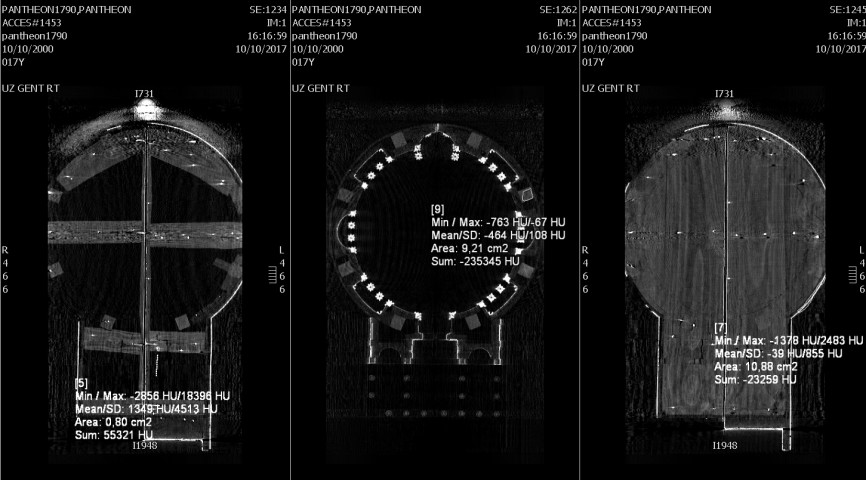
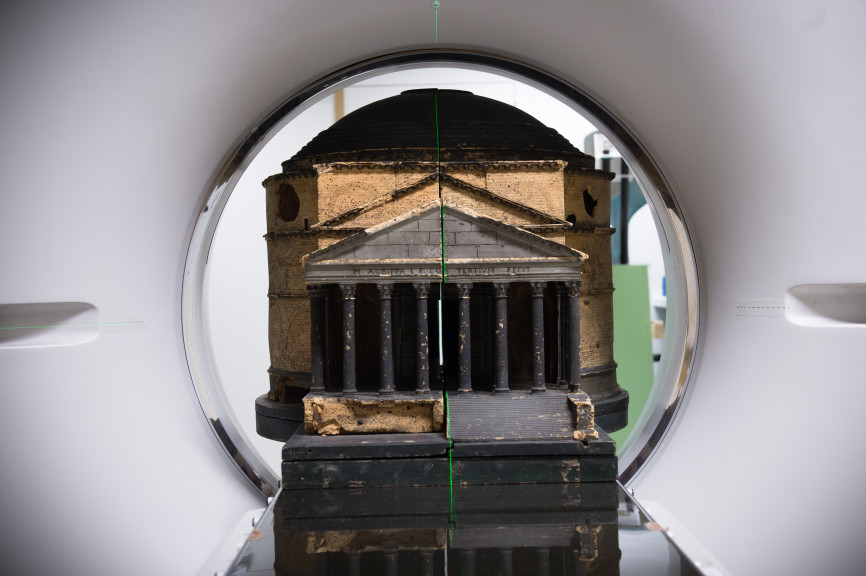
Focus on preserving and safeguarding for the future
This entire team of experts supervised the conservation operation, which emphasised cleaning, consolidation and minimal touch-ups, but no reconstructions. Therefore, there was a great focus on preserving what currently is, and not on returning to the model’s original state. This, for instance, implied that the missing stairs on the left would not be restored using new cork. The three restorers who worked on the model are definitely some of the key players in the field: these experts had previously been responsible for the restauration of the Enclosed Gardens at the Hof van Busleyden in Mechelen as well as the Ghent Altarpiece. All of these experts received an effective education at the renowned restauration department of the La Cambre School of Art and Design and at the KIK/IRPA. They have considerable experience with the treatment of polychrome surfaces and different materials. A fourth restorer would sometimes step in to focus on the wood parts. After a few random tests using various wet and dry cleaning agents, the layers of dirt were removed slowly and carefully. This entire process truly required the patientce of a saint. The restorers also removed the black paint covering the columns, in order to reveal the Egyptian granite’s original grey colour. It was simply marvellous to watch the rich colour palette reappear from under the layers of dust and dirt. Now, the model is, once again, a true spectacle of colours.
Welcome to the 'Forum for Science, Doubt & Art'
Chichi’s Pantheon model has arrived in the GUM
Once the restoration was complete, the restored Chichi model was placed back inside its specially made wooden box. Then, it was ready to be moved to the brand-new GUM, where visitors can now marvel at it. Chichi’s creation is perfectly at home at the GUM. After all, the GUM is not just another science museum. It sets out to do away with any clichés surrounding science and aims to excite its visitors, not by simply offering a set of ready-made answers but by raising original questions. The GUM will, for instance, demonstrate how scientists require a hefty dose of creativity in order to come up with hypotheses and theories and to design experiments. Or to be able to create wondrous models, like Antonio Chichi’s. His Pantheon model did not only serve as a source and conduit of scientific and artistic knowledge of architecture in antiquity. It is also quite simply a joy to look at. This way, Chichi demonstrated that science is always partly art. And that perfectly sums up the new GUM’s baseline: ‘Forum for science, doubt and art’.
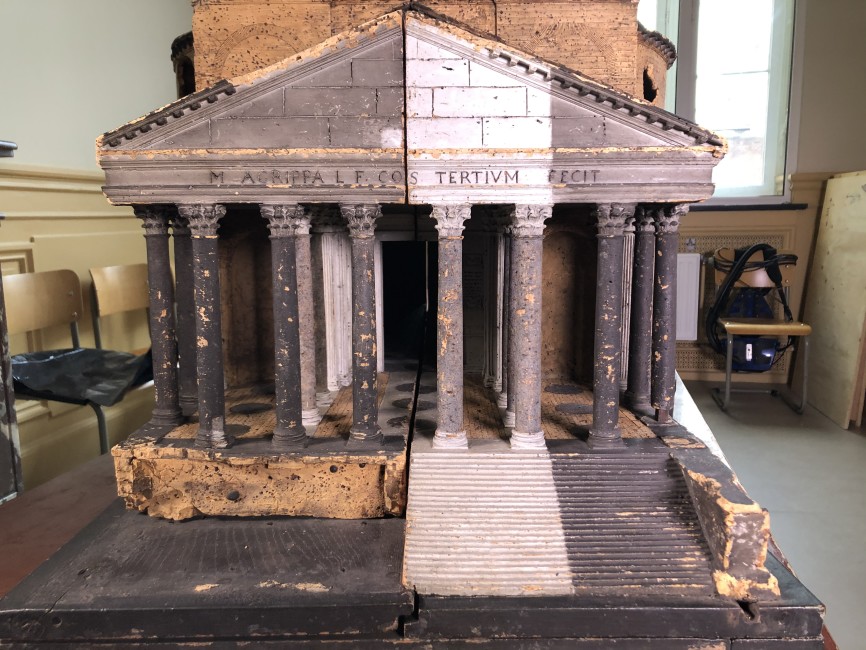
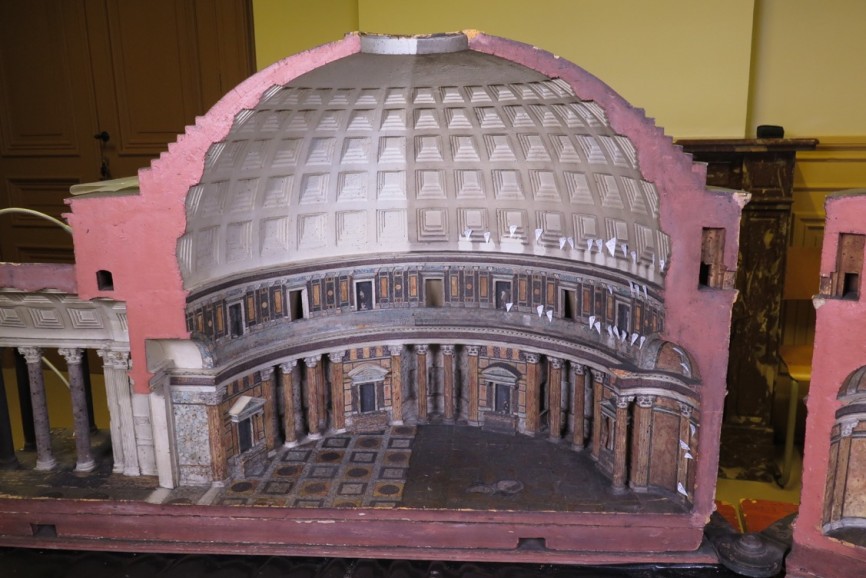
On 7 February 2020, rector Rik Van de Walle, vice-rector Mieke Van Herreweghe, Chief Logistics Administrator at Ghent University Jeroen Vanden Berghe and Dieter De Bruyn, policy advisor, were allowed a sneak peek during the final stages of the restauration. Now everyone can admire this masterpiece as well as the results of this extraordinary restauration at the brand-new GUM.
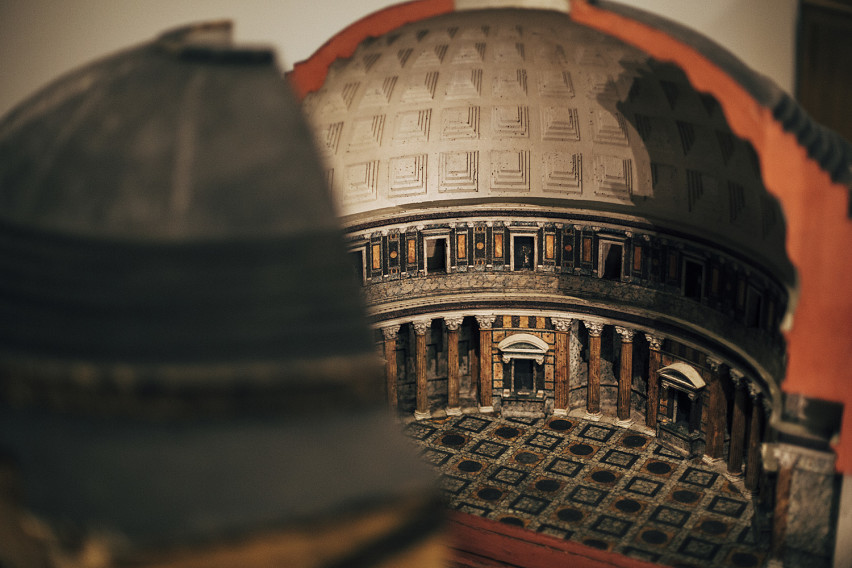
Jeroen Vanden Berghe
Chief Logistics Administrator at Ghent University
The GUM’s conservators dedicate themselves and their expertise to taking care of our rich and diverse treasure trove of academic collections. Being an archaeologist, I have always been secretly partial to this particular model. This single object is the culmination of so much history, aesthetics, knowledge and craftsmanship… I am so proud of the fact that we can show it in all its glory to the GUM’s many visitors.
”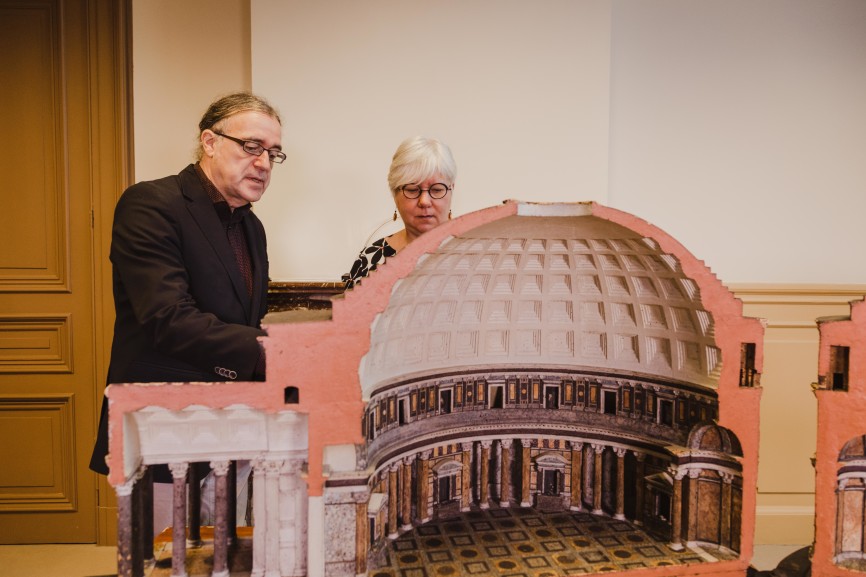
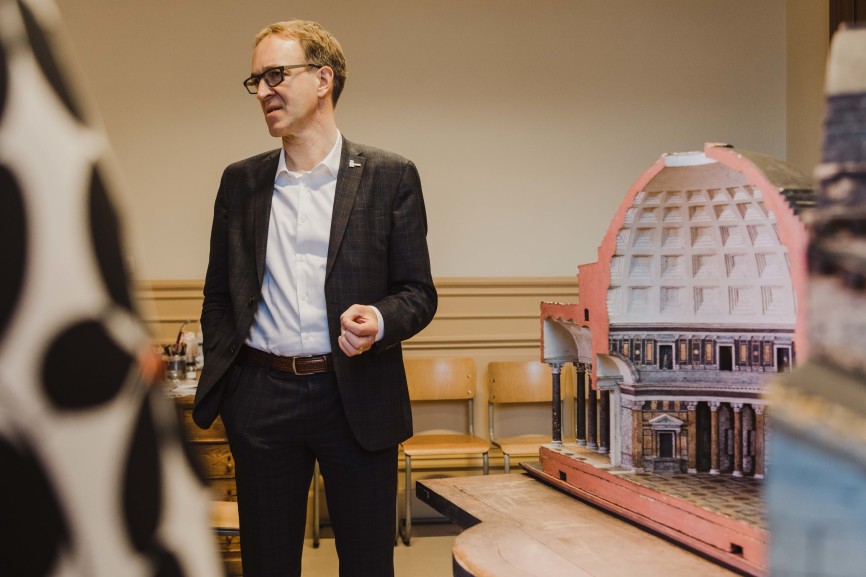
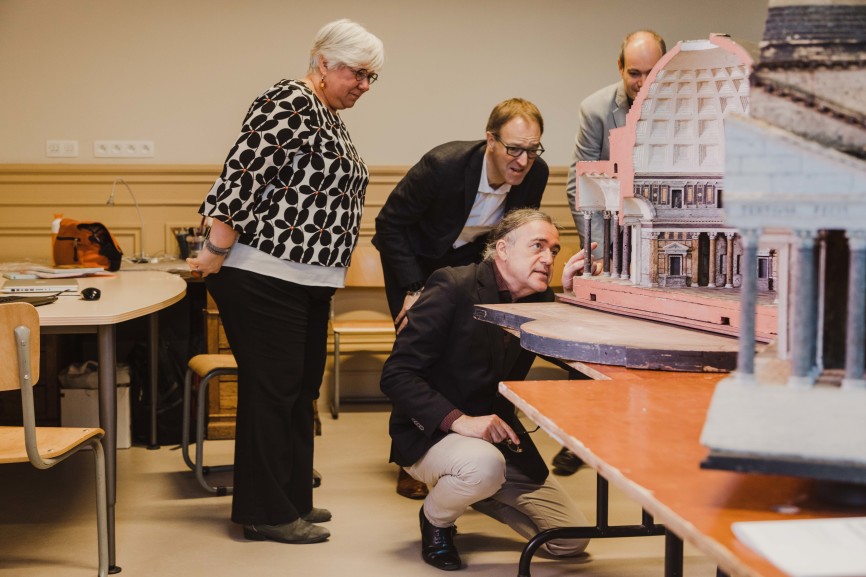
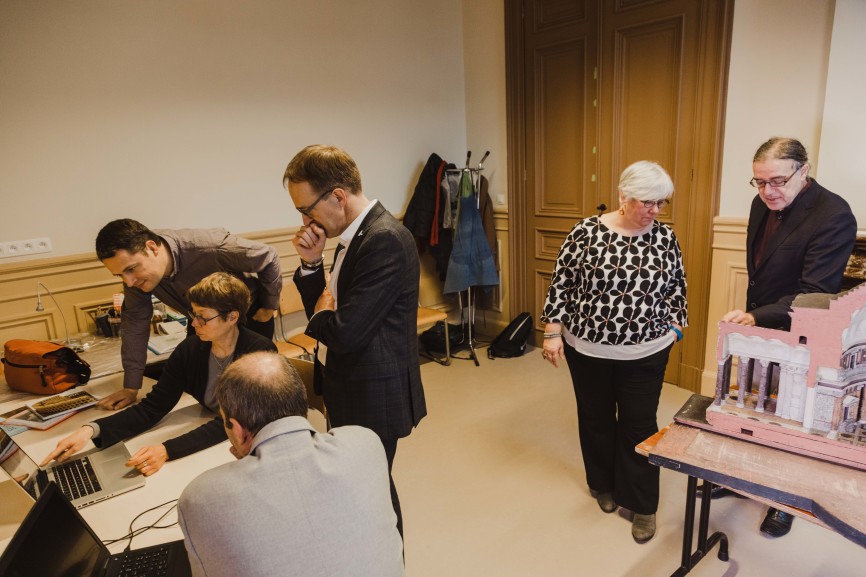
Pictures: KIK/IRPA / Hilde Christiaens / Patrick Monsieur / Ann D'Hollander / Anton Coene


